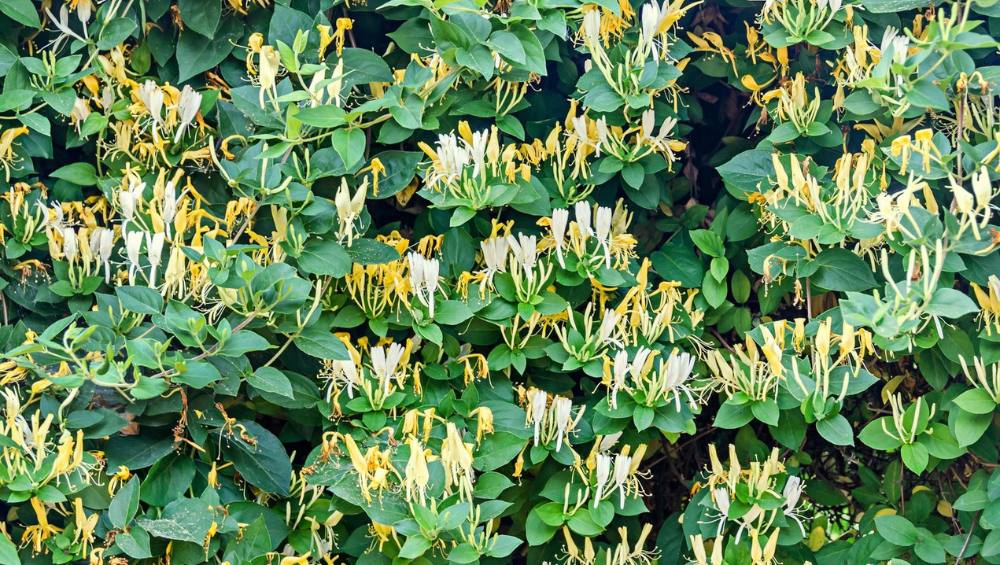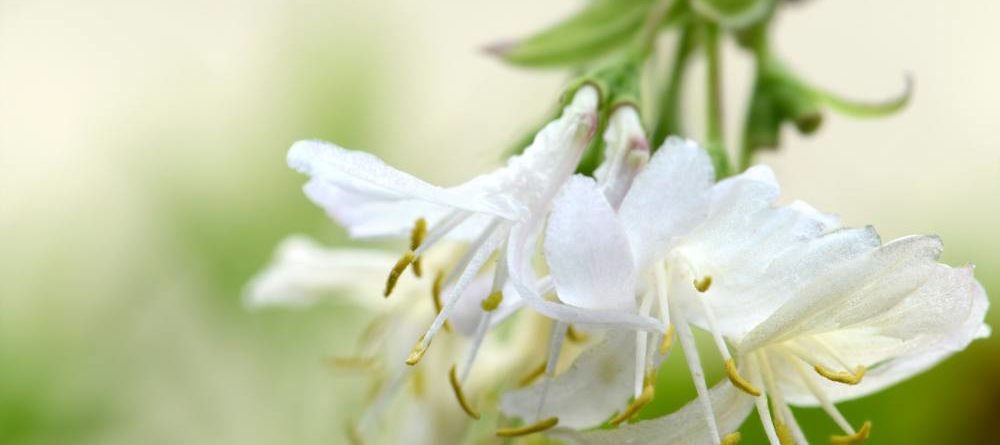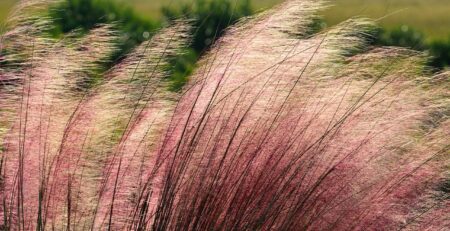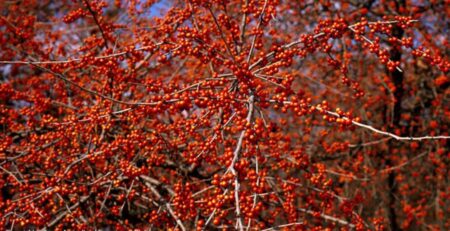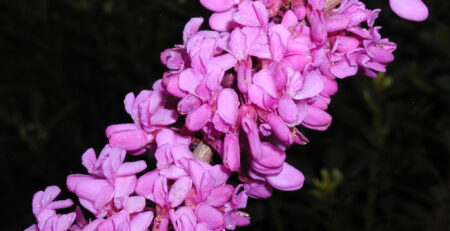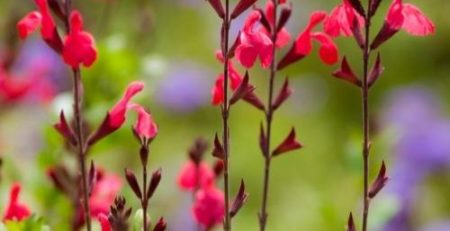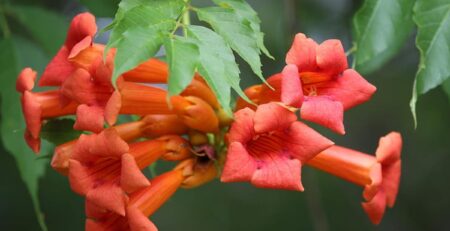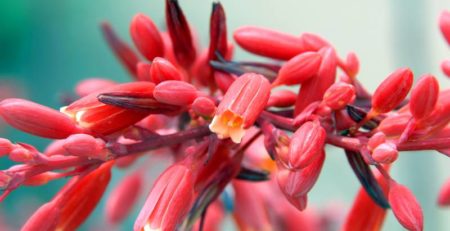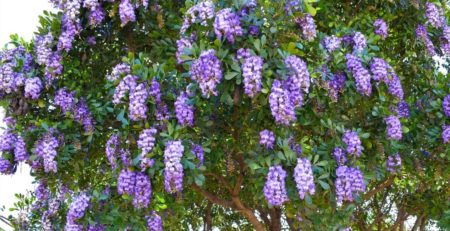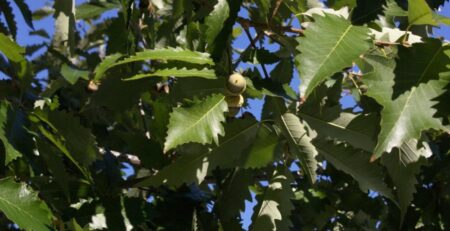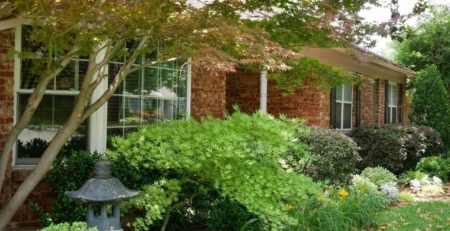Winter Honeysuckle (Lonicera fragrantissima)
Plant Description:
Winter Honeysuckle (Lonicera fragrantissima) is a semi-evergreen shrub, native to China, that is well adapted to many regions in the United States that are within the USDA Plant Hardiness Zones 4-8. Winter Honeysuckle may take the form of arching branches or a multi-stemmed erect or spreading form. It is a low-maintenance shrub that rapidly grows once established. It may be used as a border, hedge, or screen. Winter honeysuckle should be planted in the full sun into soils with good drainage that have a neutral or slightly acidic pH. Each Winter Honeysuckle plant requires 12-24 feet with an ultimate height and width of between 8 – 15 feet. The simple type leaves have a blue-green or green color arranged in an opposite orientation. Leaves measure 1 to 3 inches in length and width with an elliptical or ovate shape. Flowers develop on new wood growth. Flowers may be cream /tan, gold /yellow, pink or white appear in late January and continue through March. A small heart-shaped fruit red/burgundy colored berry presents in spring and summer. Winter Honeysuckle may be used as a border, hedge, or screen/privacy barrier. Lonicera fragrantissima is a non-native shrub that has been identified as invasive in many southern and southeastern states. The seeds are dispersed by birds and mammals that eat the berries. Winter Honeysuckle can form a dense understory thicket restricting native plant growth and native tree seedling establishment. Unless there is a specific reason for the use of Winter Honeysuckle consideration of alternative native species is recommended.
Propagation & Planting:
Winter Honeysuckle is readily established in clay, loam, or sandy soil. Winter Honeysuckle should be planted in the full sun into soil with good drainage and a neutral or slightly acidic pH. Each Winter Honeysuckle plant should be allowed 12 to 24 feet depending upon the purpose of the planting. Propagation is by seed or semi-hardwood or hardwood cuttings.
Plant Care:
If Winter Honeysuckle is established in full sun and planted in clay, loam, or sandy soil with a slightly acidic or neutral pH it requires little special attention. Consistent moisture is desirable.
Fertilize:
Recently planted Winter Honeysuckle should be provided supplemental fertilizer only if the soil is deficient in organic material. If fertilization is considered necessary a slow-release organic balanced fertilizer should be applied. Established Winter Honeysuckle should be fertilized in the spring with a balanced organic or slow-release fertilizer with a relatively low percentage of nitrogen and a higher percentage of potassium to encourage blooming.
Prune:
The flowers of the Winter Honeysuckle develop on new growth stems. Winter Honeysuckle may be pruned to maintain size and shape after flowering has occurred. If the size of the shrub has grown excessive it may be severely pruned back once it has become dormant. The clippings taken from the Winter Honeysuckle should be carefully discarded taking some care not to further spread the seeds as the shrub may become invasive.
Pest & Disease:
Winter Honeysuckle has no serious insect or disease problems. Fungal leaf disease including lease spots, light, and powdery mildew may occur if the shrub is frequently or excessively watered or watered in the late evening or at night. Treatment should first include correcting the direction and source of the watering. If necessary foliar fungicide applications may be used. At all times spraying should occur when birds, butterflies, bees, and other pollinators are not present. The best time to perform spring is very early in the morning. Potential insect pests include aphids, scale, soft lie, whitefly, loopers, planthoppers, flea beetles, and webworms. If insect pests are suspected the first issue at hand is to identify the specific insect pest in order to determine an appropriate response. Aphids may be washed off plant leaves using a water spray if there are relatively few in numbers. A severe insect infestation may require insecticide foliar sprays. The use of insecticide should always consider the full set of instructions and guidelines provided with the product.
PlantTAGG® is the most technically advanced mobile solution for helping gardeners learn about and care for their plants. PlantTAGG’s goal to educate gardeners blends seamlessly with the mission of the Master Gardener program to provide research-based horticultural information to the residents of Dallas County and beyond. To set up your own yard, text ‘PLANTS’ to 46376.
Common Name: Winter Honeysuckle, Fragrant Honeysuckle, Sweet Breath Of Spring, January Jasmine, Winter-Flowering Honeysuckle, Sweetest Honeysuckle
Botanical Name: Lonicera fragrantissima
Category: Shrub
Lifecycle: Perennial
USDA Symbol: LOFR
Hardiness Zones: 4A – 8B
Sun: Full Sun (6+ hours of sun per day) , High Sun (4-6 hours of sun per day)
Water: Low
Soil: Adaptable
pH: Slightly Acidic (6.1-6.5)
Height: 8 to 15 ft
Spread: 8 to 15 ft
Spacing: 12 to 24 ft
Growth Rate: Rapid
Bloom Time: Late Winter/Early Spring
Bloom Color(s): Golden, Yellow, White, Pink
Leaf Shape: Elliptic
Leaf Arrangement: Opposite
Leaf Retention: Semi-Evergreen
Fruit: Edible to Birds/Wildlife
Fruit Time: Late Spring/Early Summer
Miscellaneous: Tolerates poor soil, Invasive
